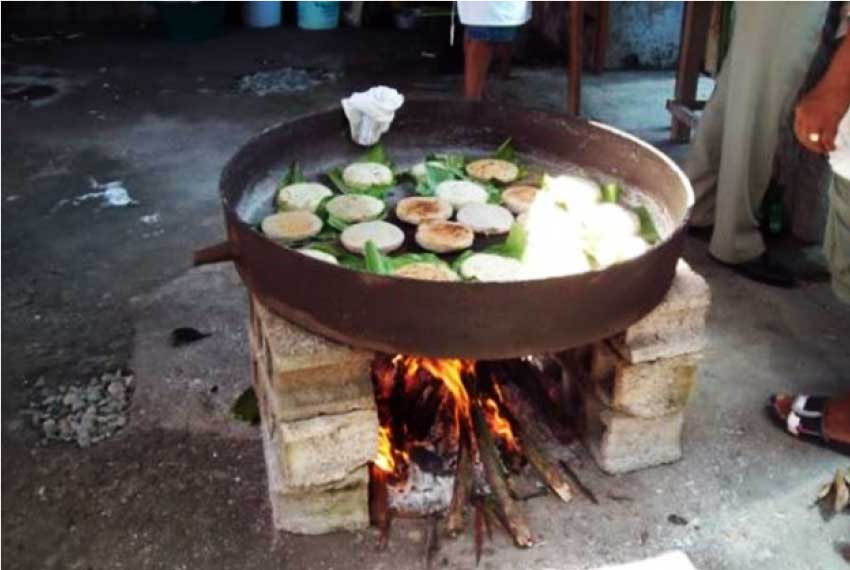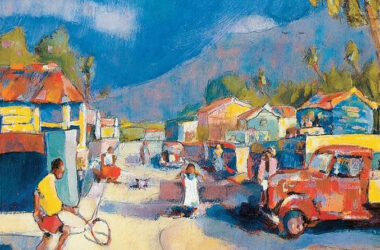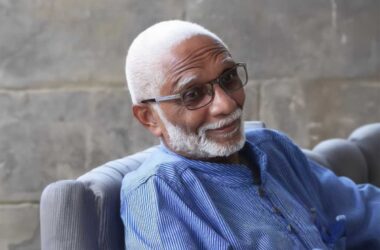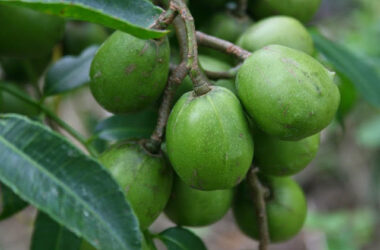OCTOBER is here and once again we set aside our fascination with modernity and the new age to reflect and celebrate our ancestors, our forgotten customs and the languages which some associate with primitiveness and backwardness.
We put away the stove and grill for a bit and we embrace the chòdyè and fouyé. Some even put away the television for a night of bamboo bursting or story-telling near a fire or in an old shop.

These are the moments when we earnestly anticipate the annual resurrection of the kabowé and the katopòl and the impromptu parade of fashionable madras attire.
The Creole heritage in Guadeloupe has evolved beautifully and is a model for the aspiring.
Creole Author: Nicole & Michel Réache Gargare launched “La Gazette Du Costume Créole” showcasing the many traditional Creole dresses among others on the island.
The book was further commended in 2010, being awarded the ‘Beau-livre’ (beautiful book award) by Salon International du livre ‘Oeussant’.
The book outlines the personal touches of the traditional dresses of Guadeloupe. Nicole Réache says based on her research the dresses go way back in the 18th century, when the Lady of the house would distribute new or used clothing to her servants and others.
The Creole dress was formed out of several pieces from the distribution.
The traditional Creole dress maintains the physic of small flowers with bright or discreet coloured lines/stripes to match the complexion of the skin.
Guadeloupe’s traditional Creole dress comprises of bright orange and yellow madras type plaid accompanied by a matching head-dress which is quite splendour in display.
Neighbourly GetAways
Very often, when we consider our Creole Heritage we often relate it to past events, mores, customs and our ancestors. We also reflect on the old ways of cooking, building and traveling. There are few places in the region where “the way of our ancestors” are kept alive the Kalinago Village by the Sea in Dominica’s Carib Territory.
Located near the Crayfish River, this site offers demonstrations in traditional home and canoe building and the processing of local medicinal and culinary herbs.
The festival which marks the common gift of the Island Neighbours is here again and in celebration nou ka palé kwéyòl tou sel an Gwadloup, Dominik, Ste Lísí, Martinik…Vini wè wòb kwéyòl, manjé manjé kwéyòl, vini kouté èk dansé mizik kwéyòl.
Let’s go Shopping!
Calling all shopaholics! In the spirit of creole brotherhood, we humbly invite you to Louis Desire Wood Carving – a local craft store.
Two convenient locations are available: the Old Mill in Canefield or the Old Market in Roseau, Dominica.
This local business is the ideal place to find a variety of wood cravings of various size, shape or colour.
Additionally, if you wish to purchase a memorable souvenir (jewellery, baskets or even clothing), sales persons are available to inspire your choices.
History
Historical note! Creole French, similar to the Antillean Creole spoken within the Caribbean islands is taught in France. Getto know your neighbours!
A bit of the French for the Visitor
Francais/kwéyòl/English
An nou palé kwéyòl
On va parler créole
We will speak creole/Let us speak creole
Bonjou . Kouman ou yé ?
Bonjour, Comment va tu ?
Good-day, How are you ?
Non mwen sé Jean-Luc
Je m’appelle Jean Luc
My name is Jean Luc
Mwen ka wèsté an Ste Lísí
J’habite á Sainte Lucie
I live in Saint Lucia
Mama mwen ka wété an Martiniq
Ma mère habite dans Martinique
My mother lives in Martinique
Sésé mwen ka wété an Dominik
Ma sœur habite á Dominic
My sister lives in Dominica
Jan mwen ka wété an Gwadlop
Mon ami vit en Guadeloupe
My friend lives in Guadeloupe
Nou tout se manmay caraibes
Nous sommes les gens de la Caraibe
We are Caribbean people






